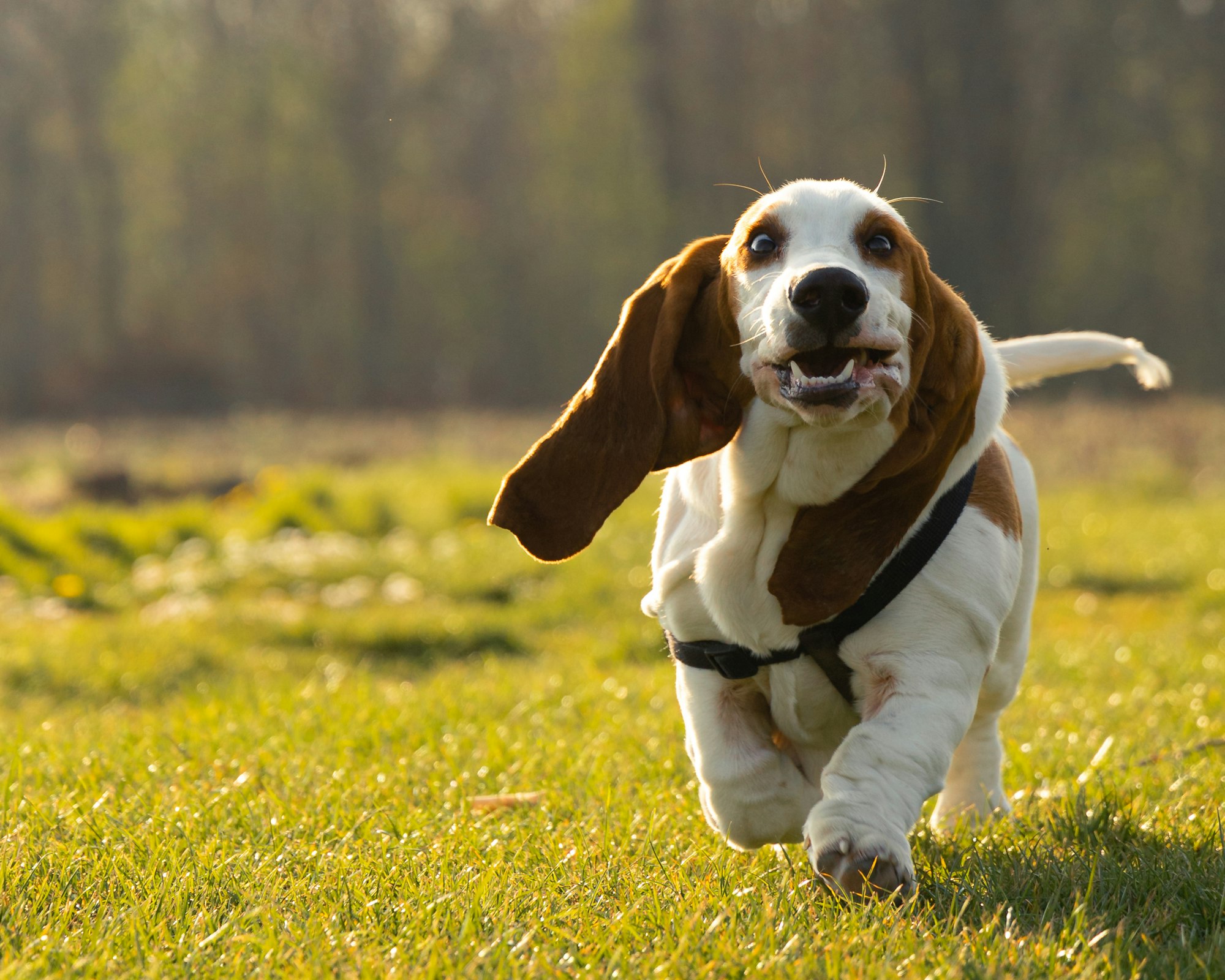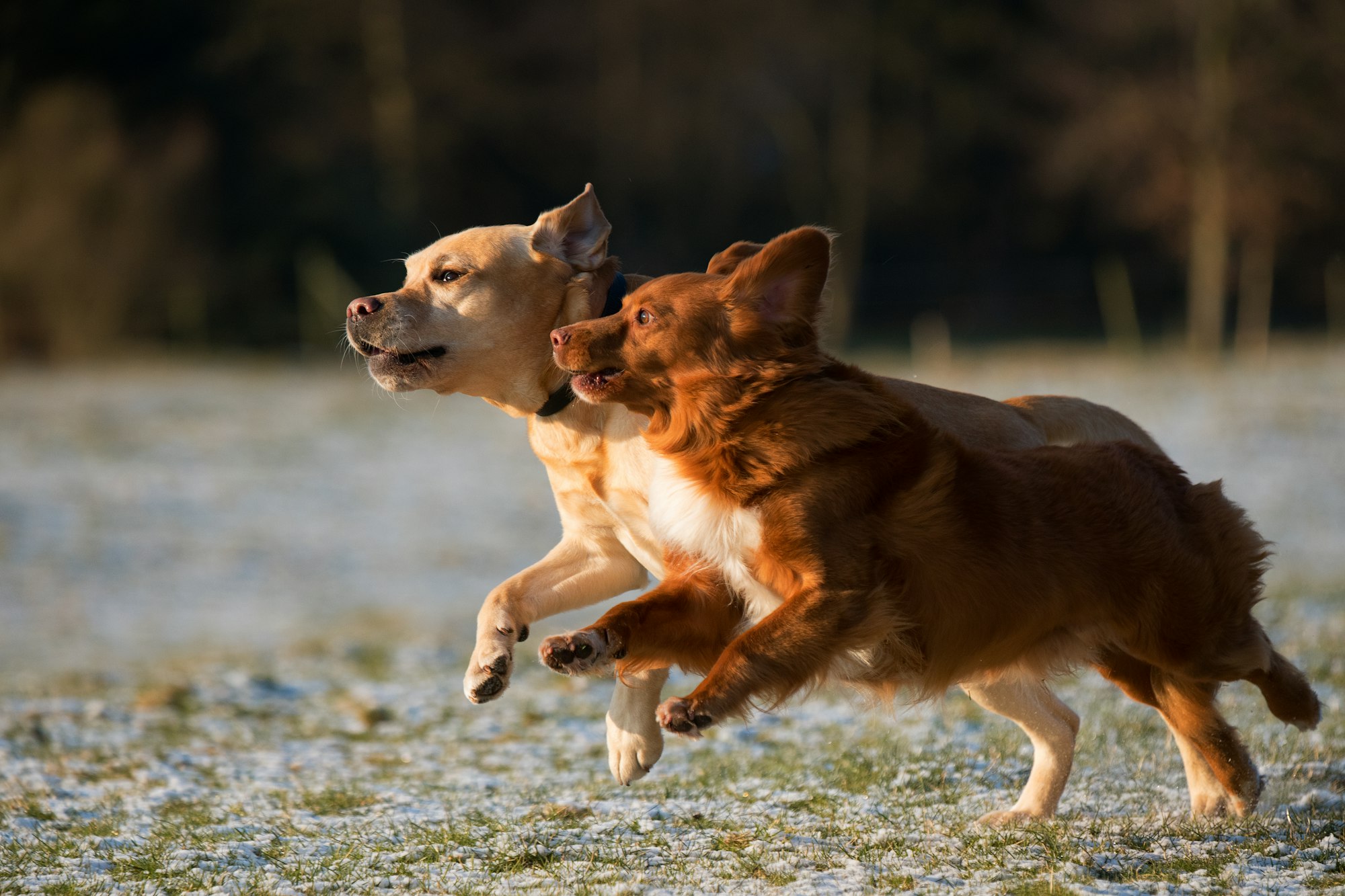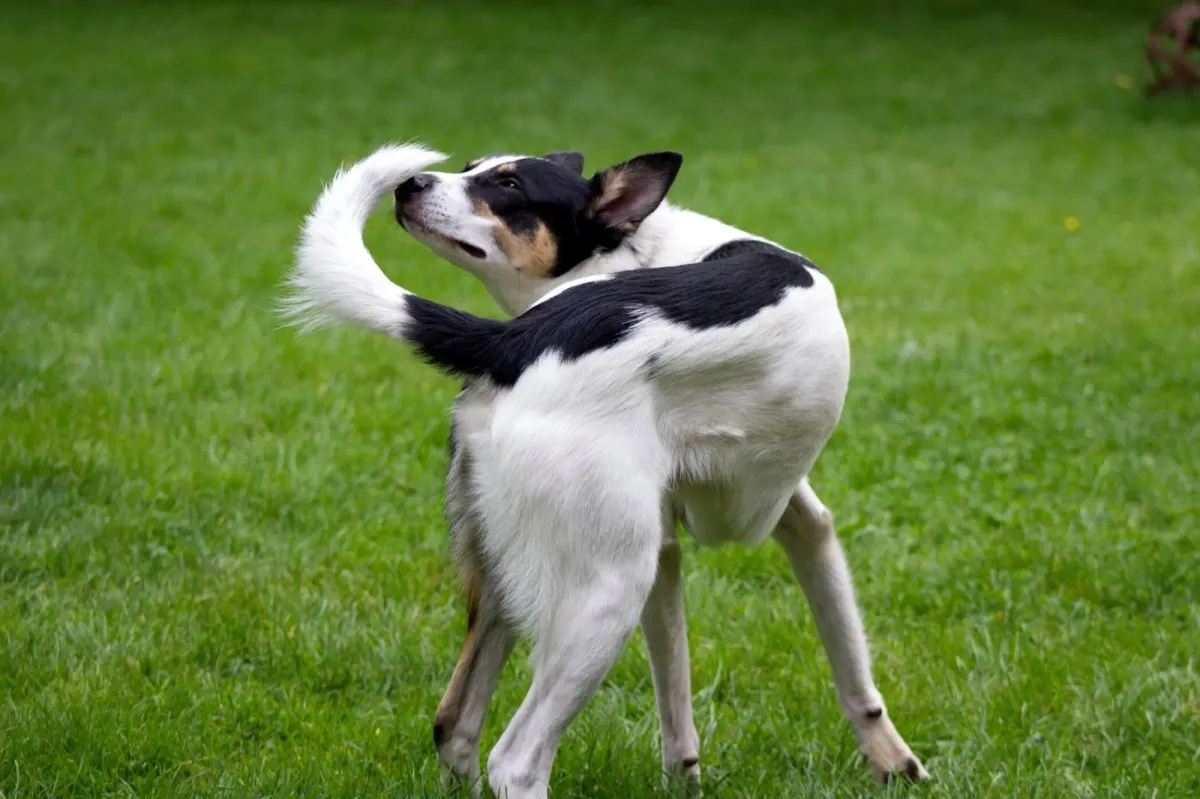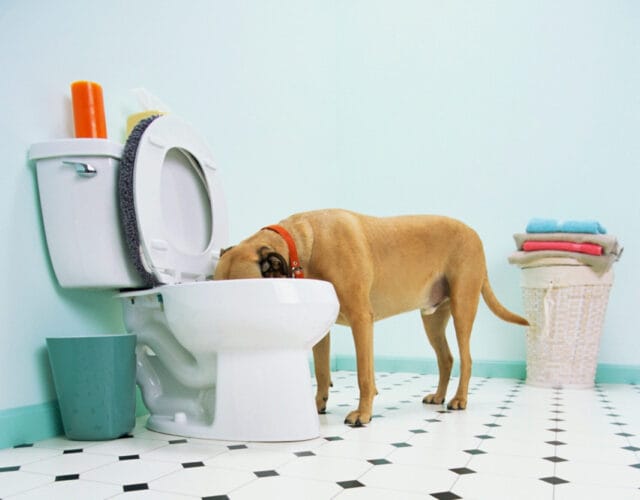Have you ever witnessed your canine companion suddenly burst into a frenzy of wild and erratic behavior, racing around the room, and seemingly losing all self-control? This delightful phenomenon is often referred to as "the zoomies." In this article, we will explore why dogs get the zoomies, shedding light on the various physical, psychological, social, and environmental factors that trigger this behavior.
Physical Release
Dogs, our loyal and spirited companions, often display an intriguing behavior known as "the zoomies." This phenomenon, characterized by sudden bursts of wild and energetic activity, is more than just entertaining; it serves a significant purpose in a dog's life. In this section, we delve into the physical aspects that trigger these spirited episodes and explore why dogs engage in this energetic release.

Excess Energy Buildup
Dogs are, by nature, active beings. They thrive on physical activity and play. However, there are moments when they find themselves with a surplus of energy, which they need to expel. This buildup of energy can lead to the zoomies, as they frantically dart around in an attempt to burn off that excess steam.
These episodes are more prevalent in puppies and high-energy breeds. For a young pup, every moment is a chance to explore the world and play. When they haven't had sufficient playtime or exercise, their energy accumulates, and the result is often an exhilarating display of the zoomies.
Playful Behavior
The zoomies are not just about expending energy; they are also a manifestation of a dog's playful nature. When a dog engages in the zoomies, it's as if they are inviting the world to join in their playful antics. Running in circles, making sharp turns, and darting around can be their way of saying, "Let's have fun!"
These playful bursts of energy are often accompanied by joyful barks and leaps, creating an infectious atmosphere of enthusiasm that can be a sheer delight to witness. It's a reminder that our furry friends are not only loyal but also incredibly joyful creatures.
Exercise and Fitness
Physical activity is an integral part of a dog's life. It helps them stay fit, maintain a healthy weight, and ensure the overall well-being of their muscles and joints. Engaging in the zoomies is, in a sense, a form of exercise for dogs. It's their way of keeping themselves agile and limber.
Providing your dog with regular exercise can help reduce the frequency of zoomies, as they won't have as much excess energy to burn off. Additionally, it contributes to their mental and emotional health, as exercise is known to reduce stress and anxiety in dogs.
Keep Your Playful Pup Safe and Monitored
In the whirlwind of excitement known as the zoomies, your dog's safety is paramount. With the Fi Dog Collar, you can ensure that their bursts of energy don't lead to unexpected escapades. Featuring cutting-edge geofence technology, the Fi Dog Collar allows you to set safe zones and instantly alerts you if your furry friend strays beyond them.
This intelligent collar, paired with the user-friendly Fi app, offers real-time location tracking, so you can monitor your dog’s whereabouts during their most spirited moments. Whether your dog is racing around in a new environment or finding joy in their favorite play area, the Fi Dog Collar keeps them secure and gives you peace of mind. Don’t just watch their joy—guard it with Fi.
Psychological Factors
Dogs are not just bundles of energy; they are complex beings with rich emotional lives. Understanding the psychological factors that trigger the zoomies is essential to comprehending this unique behavior.
Stress and Anxiety Relief
Just like humans, dogs can experience stress and separation anxiety. The zoomies can serve as a release valve for these pent-up emotions. When a dog is feeling tense or anxious, engaging in a burst of activity can help them release that built-up stress.
If you've ever noticed your dog having the zoomies after a visit to the veterinarian or during a thunderstorm, it's likely their way of coping with the stress and anxiety associated with these situations. The frenetic activity provides a temporary escape from their worries.
Boredom Buster
Dogs are intelligent creatures that thrive on mental stimulation. When they lack mental engagement or are faced with a monotonous routine, boredom can set in. The zoomies, in such cases, become an antidote to their dull surroundings.
Imagine being cooped up indoors with nothing to do; it's only natural to seek excitement and entertainment. Dogs do the same. The zoomies offer a brief respite from the tedium, injecting an element of excitement and unpredictability into their lives.
Excitement and Happiness
Perhaps one of the most heartwarming aspects of the zoomies is that they often occur when a dog is overwhelmed with joy and excitement. It's as if they can't contain their happiness, and the only way to express it is through a wild display of exuberance.
Whether it's the anticipation of a walk, the arrival of their favorite human, or the sheer joy of being alive, dogs embrace these moments with unbridled enthusiasm. The zoomies are a testament to their capacity for pure, unadulterated happiness.
Social Interaction
Dogs are renowned for their sociable nature and their ability to forge strong bonds with humans and other animals. It should come as no surprise that social interactions play a significant role in triggering the phenomenon known as "the zoomies." In this section, we will explore how a dog's need for companionship and interaction with both humans and fellow canines can lead to these exhilarating bursts of energy.
Playtime with Other Dogs
Dogs are pack animals by nature, and their social instincts are deeply ingrained. When dogs engage in playtime with other dogs, the energy levels can escalate rapidly, often resulting in zoomies. These spirited interactions are a testament to the joy dogs find in each other's company.
When dogs engage in play, their senses are heightened, and their excitement knows no bounds. Running, chasing, and playfully wrestling with their doggy friends can quickly evolve into a frenetic display of the zoomies. It's as if they are celebrating the pure joy of companionship through exuberant movement.
Human Interaction
Dogs are not only social with their kind but also highly attuned to human emotions and interactions. The presence of their human companions can be a powerful trigger for the zoomies. The bond between dogs and their owners is a profound one, and it often leads to displays of enthusiastic affection.
Imagine coming home after a long day, and your dog greets you with a wagging tail and eager anticipation. This sheer delight at your return can escalate into zoomies as they express their happiness through rapid and playful movements. It's a heartwarming reminder of the connection we share with our furry friends.

Seeking Attention
Dogs are masters at capturing our attention, and the zoomies can be their way of saying, "Look at me!" When they sense that their humans are preoccupied or not paying enough attention to them, they might resort to these spirited antics to reclaim the spotlight.
These attention-seeking zoomies often involve energetic dashes and playful leaps, making it impossible to ignore their presence. In such moments, it's essential to remember that your happy dog craves your engagement and interaction, and the zoomies are their way of ensuring they have your undivided attention.
Environmental Triggers
The world around a dog is filled with stimuli, some of which can trigger the zoomies. Understanding these environmental triggers can provide valuable insights into why dogs engage in this spirited behavior.
New or Unfamiliar Places
Dogs are naturally curious creatures, and exploring new environments can be an exhilarating experience for them. When they find themselves in an unfamiliar place, the novelty of the surroundings can trigger the zoomies.
The wide-open spaces, new scents, and uncharted territory can be too tempting for a dog to resist. They may race around, expressing their excitement and curiosity as they discover the wonders of the unknown.
Sudden Changes in Routine
Dogs thrive on routines and predictability. Any sudden deviation from their usual schedule can pique their interest and lead to the zoomies. It's as if they are reacting to the unexpected with a burst of energy.
This behavior can occur when there's an abrupt change in their daily routine, such as an unscheduled playtime, a spontaneous outing, or even a surprise treat. Dogs revel in these unexpected moments, and the zoomies become a way to celebrate them.
Specific Objects or Toys
Sometimes, a particular object or puzzle toy can trigger the zoomies. It might be a beloved squeaky toy, a ball, or even an item they've never encountered before. Dogs are known for their inquisitiveness, and anything that captivates their interest can lead to a burst of playful energy.
These object-induced zoomies often involve running, jumping, and chasing after the chosen item. It's a testament to a dog's ability to find joy and excitement in even the simplest of things.
Puppy Zoomies vs. Adult Dog Zoomies
Zoomies can vary in frequency and intensity depending on a dog's age and developmental stage.
- Developmental Stages: Puppies are more prone to frequent and intense episodes of the zoomies as they discover the world around them. Adult dogs may experience them less frequently.
- Frequency and Duration: Puppy zoomies often happen multiple times a day and can last longer, while adult dog zoomies may occur less frequently and be of shorter duration.
Health Considerations
While zoomies are generally harmless and a sign of a happy, healthy dog, it's essential to consider health factors.
- Underlying Medical Conditions: In some cases, zoomies can be a response to pain or discomfort. If your dog's behavior suddenly changes, consult with a veterinarian to rule out any underlying health issues.
- When to Be Concerned: If your dog's zoomies become excessively frequent, or intense, or if they exhibit any concerning behaviors alongside it, such as limping or whining, seek professional advice.
Managing the Zoomies
If you're wondering how to handle the zoomies, here are some tips:
- Providing Regular Exercise: Ensure your dog gets enough physical activity to burn off excess energy.
- Mental Stimulation: Engage your dog's mind with puzzles, toys, and training sessions to prevent boredom.
- Creating a Safe Space: Designate an area where your dog can zoom around safely without damaging furniture or getting injured.
Common Mistakes in Handling Zoomies
While zoomies are a natural and often entertaining behavior exhibited by dogs, there are common mistakes that well-intentioned pet owners can make when handling these exuberant episodes. Understanding these mistakes is crucial to ensure the safety and well-being of both your dog and those around them. In this section, we will explore the pitfalls to avoid when dealing with the zoomies.
Mistake 1: Punishment vs. Positive Reinforcement
One of the most significant mistakes is responding to the zoomies with punishment. It's essential to recognize that the zoomies are not a deliberate act of disobedience or defiance; they are a spontaneous expression of a dog's energy and emotions. Reacting to punishment can create confusion and fear in your dog, potentially damaging the bond you share.
Solution: Instead of punishment, employ positive reinforcement techniques. When your dog displays calm behavior after the zoomies, reward them with praise, treats, or affection. This encourages them to associate tranquility with positive outcomes, gradually reducing the frequency and intensity of the zoomies.
Mistake 2: Ignoring the Behavior
While the zoomies can be entertaining, ignoring them when necessary is another mistake. There are times when zoomies can escalate to the point where they become potentially hazardous or disruptive. Ignoring this behavior entirely may lead to accidents or injuries.
Solution: When your dog is engaged in zoomies indoors, especially in confined spaces, gently redirect their energy toward a designated play area. Encourage them to release their energy safely and avoid situations where they might knock over objects or people.
Mistake 3: Failing to Provide Adequate Exercise
Zoomies are often a result of excess energy, and failing to provide your dog with sufficient exercise can exacerbate this behavior. A tired dog is less likely to engage in intense zoomies.
Solution: Ensure your dog receives regular and appropriate exercise based on their age, breed, and energy level. Structured playtime, daily walks, and interactive dog toys can help burn off excess energy and reduce the frequency of zoomies.
Mistake 4: Encouraging Zoomies Unintentionally
Sometimes, well-meaning owners inadvertently encourage zoomies by reacting enthusiastically to the behavior. While it's natural to find these displays of exuberance endearing, excessive excitement can reinforce the zoomies.
Solution: Maintain a calm and composed demeanor when your dog is experiencing the zoomies. Avoid excessive clapping, cheering, or joining in their energetic play. Your composed presence will help your dog learn to self-regulate their excitement.

Mistake 5: Neglecting Basic Training
Neglecting basic training and commands can make it challenging to manage the zoomies effectively. Dogs that lack basic obedience training may struggle to respond to commands during these energetic outbursts.
Solution: Invest time in training your dog with basic commands like "sit," "stay," and "come." These commands can be valuable in redirecting your dog's behavior during zoomies and ensuring their safety.
In summary, zoomies are a natural expression of a dog's energy and emotions. Avoiding common mistakes in handling them is essential for maintaining a positive relationship with your furry companion. By using positive reinforcement, redirecting their energy, providing adequate exercise, and maintaining consistent training, you can ensure that the zoomies remain a joyful and safe aspect of your dog's life.
Conclusion
In conclusion, zoomies are a delightful and natural behavior displayed by dogs for various reasons. Understanding why dogs get the zoomies can help you provide the right environment and care for your furry friend. Remember that while the zoomies are generally harmless, it's essential to stay attuned to your dog's overall well-being and consult a veterinarian if you have concerns.
FAQs
1. Are the zoomies harmful to my dog?
- No, the zoomies are generally not harmful and are a normal expression of a dog's energy and emotions. However, monitor your dog's behavior for any signs of distress.
2. How can I prevent my dog from getting the zoomies indoors?
- Regular exercise and mental stimulation can help reduce indoor zoomies. Create a safe play area for your dog and provide engaging toys.
3. Can older dogs get the zoomies too?
- Yes, though less frequently than puppies, older dogs can still experience the zoomies, especially in response to excitement or playfulness.
4. Are zoomies different from seizures?
- Yes, zoomies are typically characterized by a burst of frenetic and playful behavior, while seizures involve involuntary muscle contractions and altered consciousness. If in doubt, consult a veterinarian.
5. Can I train my dog to control the zoomies?
- While you can't entirely eliminate the zoomies, you can manage them through consistent exercise and positive reinforcement training to promote calm behavior.
Want to read more "Why Do Dogs..." articles? We got you!






